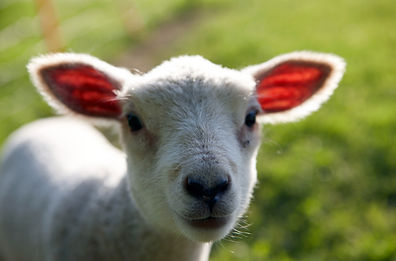About
Verigrow is manufactured by Veratin Limited, an Australian publicly listed company (NSX:VTN). It is an innovative all-purpose fertiliser and soil improver made using 100% Australian low grade wool. Wool is a sustainable and rich source of amino acids (more than 75% of wool is made of amino acids). Verigrow contains an organic (from amino acids) and an inorganic source of nitrogen (12% w/v total N). The inorganic nitrogen provides an immediate source of nitrogen while the organic nitrogen provides a slow release and longer lasting effect. You can use Verigrow on anything and everything including lawn, fruit trees, vegetables, flowers, natives, herbs and more.
Benefits of amino acids
Amino acids are the building blocks of life. The benefits of amino acids for plants are numerous and have been studied by several research groups over the years. The summary below is extracted from peer-reviewed scientific articles, but is by no means comprehensive. If you would like to learn more, we have included references at the bottom of the page.
Amino acids help plants combat stress, improve flowering, increase root mass, activate natural defence mechanisms in plants, and enhance photosynthesis by increasing the chlorophyll concentration. They also promote nutrient absorption and stimulate the essential metabolic activities in the plant. Most amino acids are also charged enabling them to attract water molecules and therefore help with water retention.
Amino acids are valuable feedstock for micoorganism and are biodegradable via natural pathways. They improve the beneficial microflora in various ways, such as, by strengthening the outer walls, allowing them to withstand harsher conditions. Happier, stronger microbial colonies help produce better nutrient uptake, as well as a more extensive and healthier root system that can fight diseases and maintain effectiveness in adverse environmental conditions.
It takes energy for plants to synthesise the amino acids required to create those cells using primarily nitrogen, phosphorus and potassium (NPK) from fertilisers. This happens either directly by incorporating such elements in the amino acid structure (e.g. nitrogen) or indirectly by exploiting such elements to activate enzymes (e.g. potassium) or build the energy currency of cells (e.g. phosphorus). The presence of amino acids in Verigrow therefore negates the need for high levels of NPK fertilisers. Providing plants with supplementary amino acids save plants energy, which they can utilise elsewhere. This helps maintain not only vigorous growth but pest and disease resistance as well.
Independent studies
Independent studies have shown that Verigrow is significantly better than a market leading brand in improving various plant health parameters. These parameters include biomass, plant height, root mass and NDVI (a measure of ‘greeness’). The study found Verigrow was 2 to 5 times better than the market leading brand in every parameter measured.
References
SH SADAK, M., Abdelhamid, M.T. and Schmidhalter, U., 2015. Effect of foliar application of amino acids on plant yield and some physiological parameters in bean plants irrigated with seawater. Acta Biológica Colombiana, 20(1), pp.141-152.
Liu, X.Q. and Lee, K.S., 2012. Effect of mixed amino acids on crop growth. Agricultural Science, pp.119-158.
Cao, X., Ma, Q., Zhong, C., Yang, X., Zhu, L., Zhang, J., Jin, Q. and Wu, L., 2016. Elevational variation in soil amino acid and inorganic nitrogen concentrations in Taibai Mountain, China. PloS one, 11(6), p.e0157979.
Popko, M., Michalak, I., Wilk, R., Gramza, M., Chojnacka, K. and Górecki, H., 2018. Effect of the new plant growth biostimulants based on amino acids on yield and grain quality of winter wheat. Molecules, 23(2), p.470.
Jämtgård, S., 2010. The occurrence of amino acids in agricultural soil and their uptake by plants (Vol. 2010, No. 27).
Wang, G., Xu, M., Wang, W. and Galili, G., 2017. Fortifying horticultural crops with essential amino acids: a review. International journal of molecular sciences, 18(6), p.1306.



